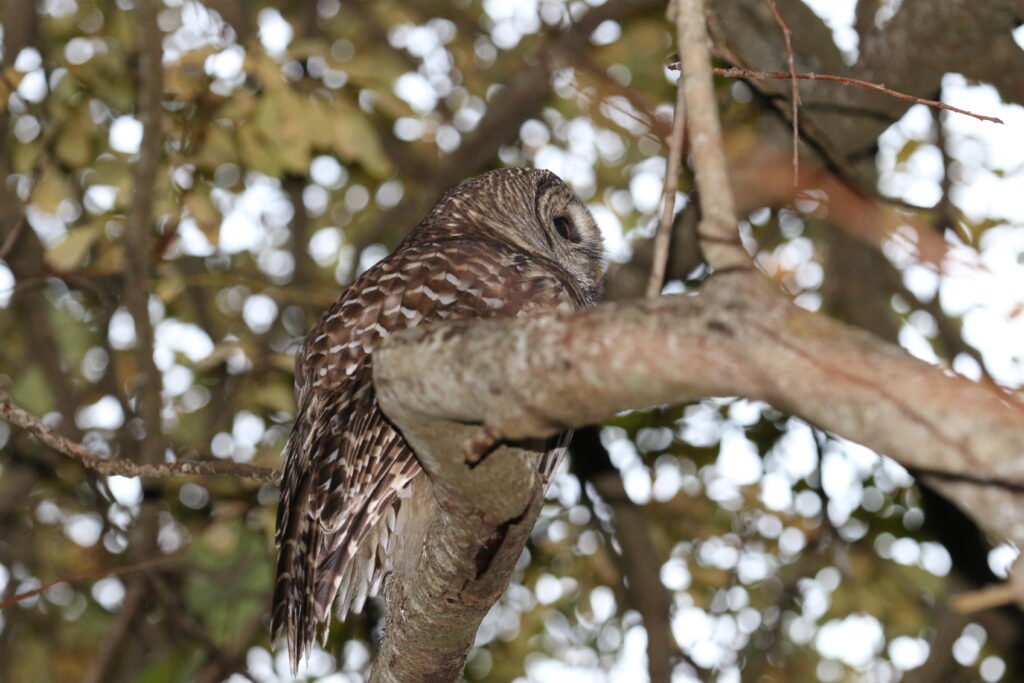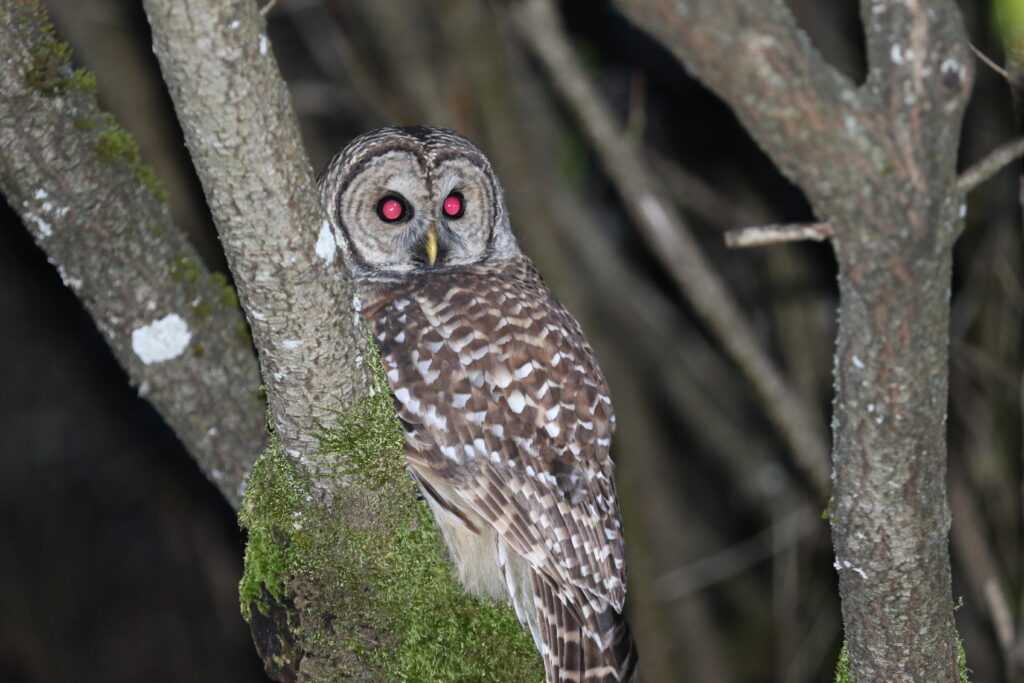Barred Owl (Stix varia)

The barred owl is a mid-sized owl that has a large round head, stocky body, no ear tufts, and a rounded, medium length tail. They have dark eyes and brown and white mottled plumage. Different parts of their body have different patterns. The neck and upper breast have horizontal brown bars and their underparts and belly have vertical bars. A characteristic feature of barred owls is their distinctive hooting call. It is commonly remembered as sounding like the following phrase: “Who cooks for you? Who cooks for you-all?”

Barred owls eat a variety of small animals including rodents, rabbits, reptiles, amphibians and invertebrates. Their hunting behaviour involves perching in the trees and scanning for prey with their sharp eyesight and hearing. Once their target has been located, the owl swoops down onto their prey. This hunting technique is referred to as perch and pounce. This species does most of its hunting right after sunset and at night but can occasionally be found hunting during the day. Otherwise, barred owls tend to roost during the day on branches or in tree cavities. Barred owls nest high up in large trees, typically in natural cavities or existing stick platform nests abandoned by other species.

Barred owls are a relatively new arrival to the province and Vancouver Island, first recorded in northern BC in 1943 and not until the 1960’s on Vancouver Island. They have since spread south and are now found throughout the province except for on Haida Gwaii. Barred owls are now relatively common on Vancouver Island. The barred owls’ preferred habitats are mixed and coniferous forests with tall trees. Within BC they are most common within the Georgia Depression. The main predator of this species is the Great Horned Owl. The barred owls range has expanded greatly over the past century, with its native range having originally been eastern North America. The success of this species has had negative implications on a few other more locally confined species. For example, spotted owl populations are at risk of being lost because of the combination of both competition from barred owls, and the loss and fragmentation of old-growth forest habitat. Additionally, barred owl predation has contributed to a population crash of western-screech owls in the Georgia Depression.
For more information, visit the BC Breeding Bird Atlas, All About Birds by the Cornell Lab, and the BC Species and Ecosystem Explorer.


